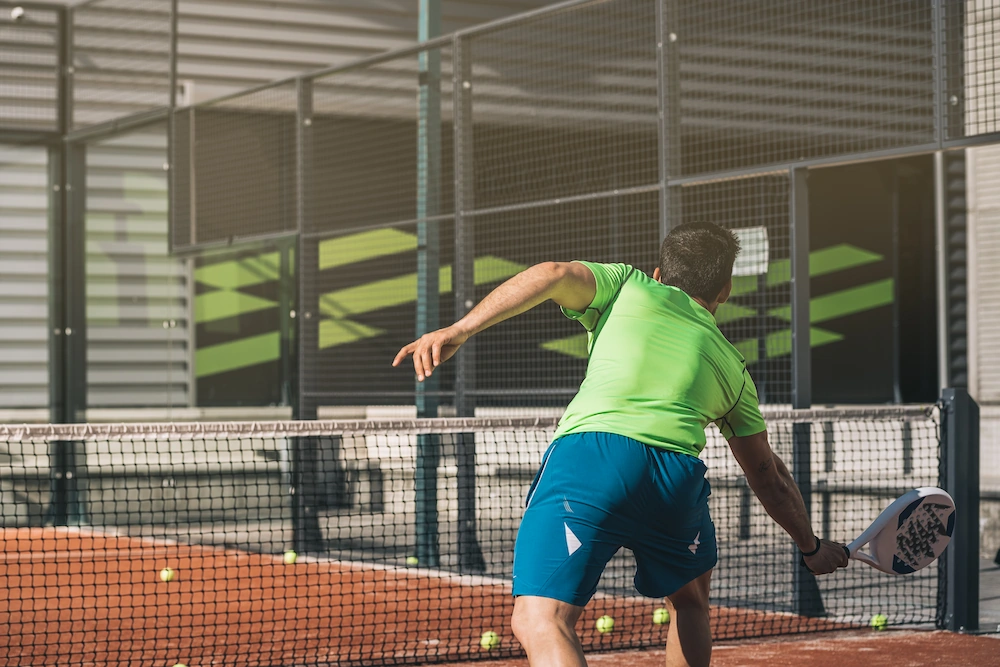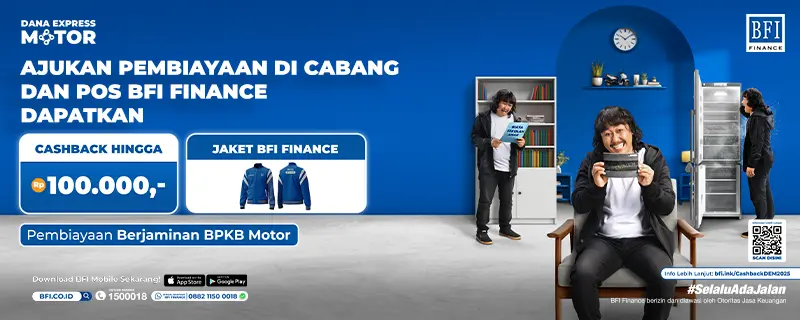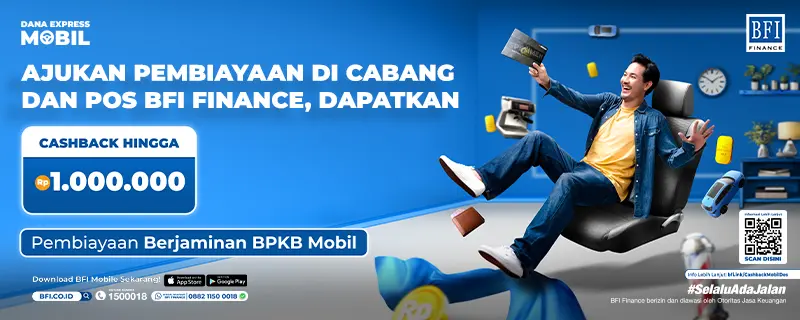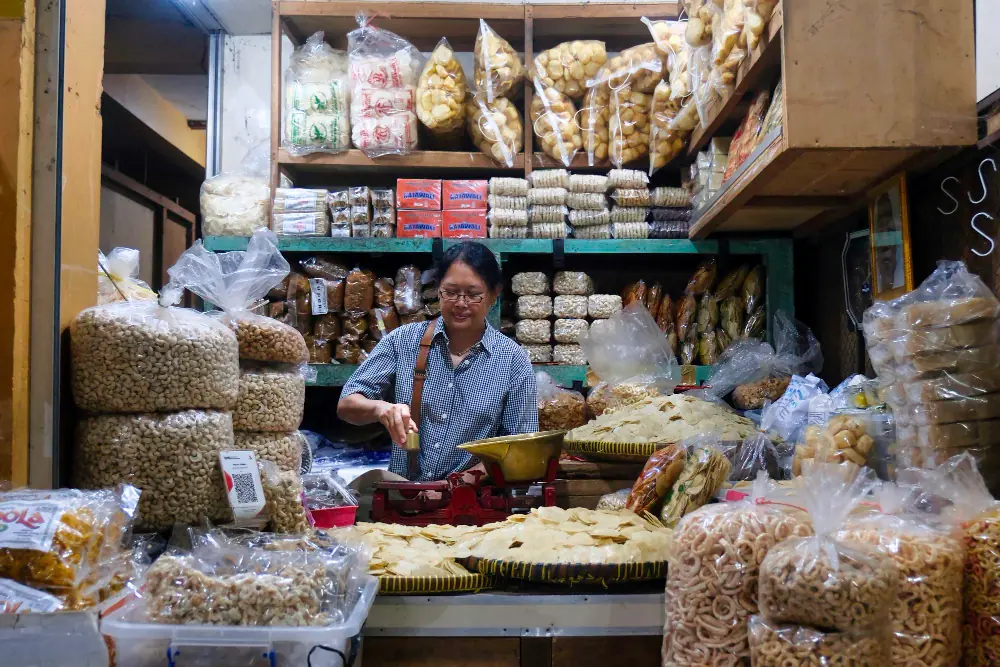Padel court businesses are gaining more attention as the sport continues to rise in popularity across Indonesia. In addition to promoting a healthy lifestyle, the growing trend of padel also presents a promising business opportunity. Increasing interest, active communities, and high demand for court rentals are strong reasons to consider entering this business.
However, given the substantial initial investment, it's important to evaluate whether a padel court can become a profitable and sustainable business opportunity in the long run. Let's dive deep into why this business is attractive and what capital is required in this article!
What Is Padel?
Padel is a racket sport similar to tennis and squash, but with its own unique characteristics. The game is only played in doubles format—two versus two—on a smaller court than tennis, surrounded by glass walls.
The game is fast-paced, strategic, and doesn’t require excessive physical strength, making it suitable for all ages and fitness levels.
The sport first gained popularity in Spain, with around 4 million amateur players and over 20,000 courts as supporting facilities.
Over time, padel spread to Latin America, Europe, Asia, and the Middle East, becoming a lifestyle trend across various Asian countries and showing similar potential in Indonesia.
Considering these global trends, Indonesia has a great opportunity to become the next promising market.
Why Is Padel Court Business Attractive?
If managed with the right strategy, a padel court business can become a promising long-term venture. Here are several reasons why this type of business is worth considering.
1. Rapid Market Growth
In recent years, the number of padel courts worldwide has increased significantly. People view padel as a social and accessible sport that appeals to various age groups.
In Indonesia, a large young population and growing interest in padel have boosted demand for adequate playing facilities. This trend opens up opportunities for entrepreneurs to develop padel courts, either independently or through partnerships with sport center operators.
2. Lower Capital Compared to Tennis & Futsal
The cost of building a padel court is generally lower than that of tennis or futsal courts, mainly due to its smaller size. In fact, one piece of land can accommodate multiple padel courts, making the cost per unit more efficient and increasing potential revenue.
3. Fast Return on Investment (ROI)
The primary income streams for padel courts include court rental, coaching sessions, tournaments, and equipment rental.
Since the game is played by four people, the rental fee can be split among players, making it affordable for users while still offering attractive profit margins for owners. Additionally, strong padel communities contribute to player loyalty and long-term repeat usage.
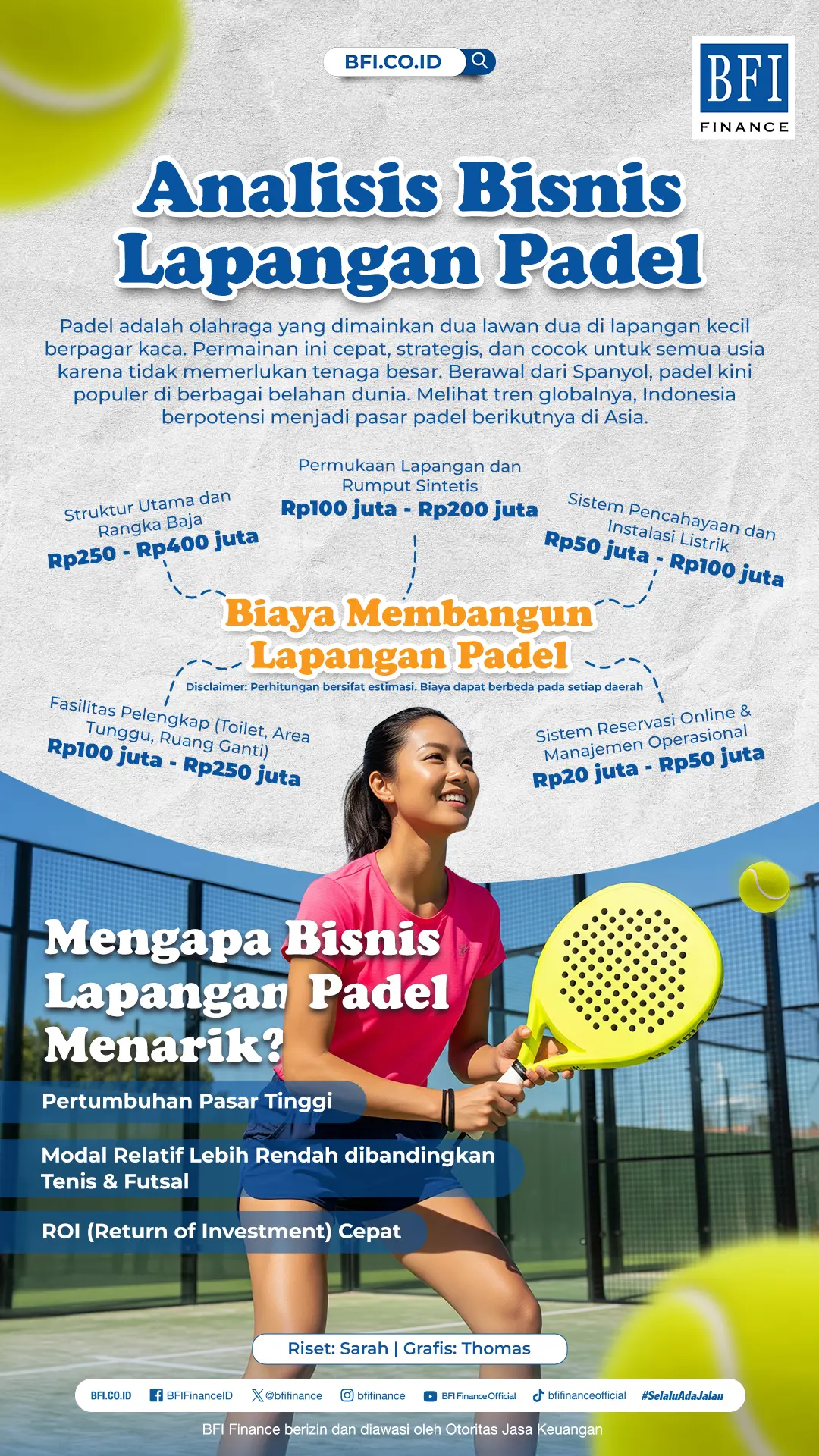
Key Success Factors for a Padel Court Business
To ensure your padel court business operates optimally and lasts in the long run, several key factors need to be considered. Below are the success factors to keep in mind:
-
Strategic Location: The location plays a crucial role in business success. Easily accessible areas such as upscale residential complexes, business districts, or recreational zones have high potential to attract visitors.
-
High-Quality Facilities: The quality of the court, proper lighting, and supporting facilities like waiting areas, cafés, and lounges add extra value and comfort for players.
-
Community and Events: Building an active community, regularly hosting tournaments, and partnering with institutions or companies help maintain customer interest and engagement.
-
Digital Marketing: Promotion through social media, influencers, professional websites, and membership programs can effectively expand market reach and attract new players.
-
Reliable Partners: Working with experienced padel court contractors is essential to ensure long-term construction quality and court durability.
Cost to Build a Padel Court
The initial investment to build a padel court typically ranges from IDR 600 million to IDR 1.2 billion, depending on material specifications, whether it is indoor or outdoor, and the presence of additional supporting facilities.
Broadly speaking, here are the cost components to consider:
-
Main structure and steel frame: Around IDR 250 million to IDR 400 million, depending on design and materials used.
-
Court surface and synthetic grass: Ranges from IDR 100 million to IDR 200 million.
-
Lighting system and electrical installation: Estimated at IDR 50 million to IDR 100 million, depending on required lighting intensity.
-
Additional facilities such as toilets, waiting areas, and changing rooms: May require about IDR 100 million to IDR 250 million.
-
Online reservation system and operational management: Initial investment of around IDR 20 million to IDR 50 million.
The total cost will largely depend on the project scale and the quality of service you want to offer to your users.
That’s a comprehensive overview of the padel court business, from its profit potential to the capital needed for development.
With growing public interest, padel courts present an exciting business opportunity, especially if you're exploring investment alternatives in the sports sector.
However, launching a business like this requires careful financial planning. If you need productive financing support, BFI Finance is ready to help make your business plan a reality.
With our flexible and secure multipurpose financing services, you can use guarantees such as motorcycle BPKB, car BPKB, or house/shop certificates to suit your needs.
Rest assured, BFI Finance is licensed and supervised by the Financial Services Authority (OJK), so you don’t need to worry about safety. Let’s build your padel court business by applying for working capital financing, because #SelaluAdaJalan with BFI Finance!
